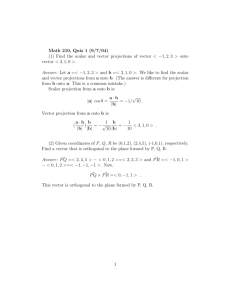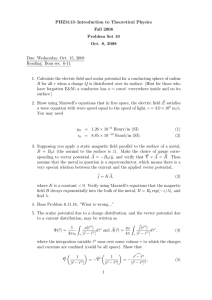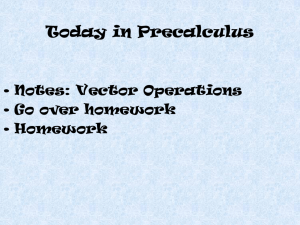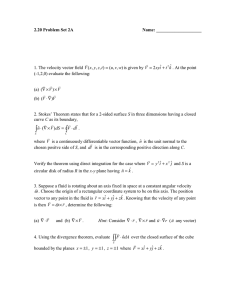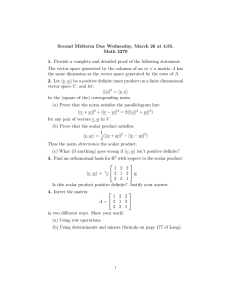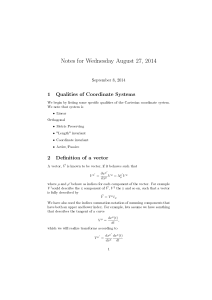Vector Algebra and Calculus
advertisement
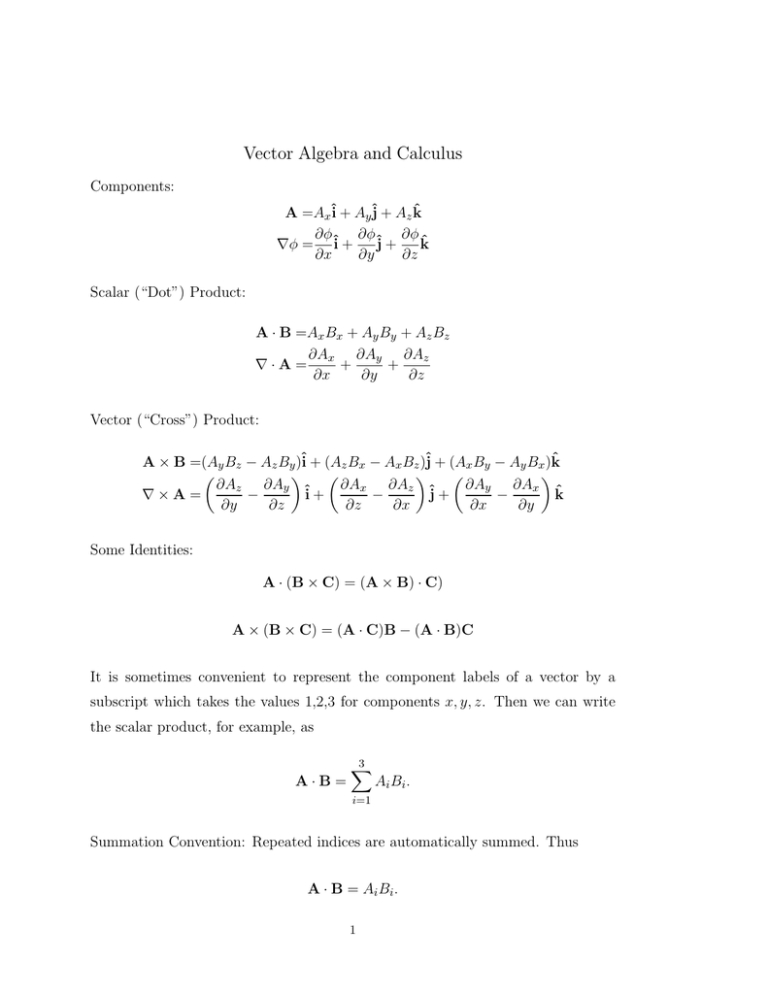
Vector Algebra and Calculus Components: A =Ax î + Ay ĵ + Az k̂ ∂φ ∂φ ∂φ ĵ + k̂ ∇φ = î + ∂x ∂y ∂z Scalar (“Dot”) Product: A · B =Ax Bx + Ay By + Az Bz ∂Ax ∂Ay ∂Az ∇·A= + + ∂x ∂y ∂z Vector (“Cross”) Product: A × B =(Ay Bz − Az By )î + (Az Bx − Ax Bz )ĵ + (Ax By − Ay Bx )k̂ ∂Ay ∂Ax ∂Az ∂Ay ∂Ax ∂Az ∇×A= − − − î + ĵ + k̂ ∂y ∂z ∂z ∂x ∂x ∂y Some Identities: A · (B × C) = (A × B) · C) A × (B × C) = (A · C)B − (A · B)C It is sometimes convenient to represent the component labels of a vector by a subscript which takes the values 1,2,3 for components x, y, z. Then we can write the scalar product, for example, as A·B= 3 X Ai Bi . i=1 Summation Convention: Repeated indices are automatically summed. Thus A · B = Ai Bi . 1 Kronecker Delta: δij = 1 for i = j 0 for i 6= j. The Epsilon Symbol: Let ǫijk Then +1 (ijk) an even permutation of (123) = −1 (ijk) an odd permutation of (123) 0 two or more of i, j, k are equal. (A × B)i = ǫijk Aj Bk . Identity: ǫijk ǫmnk = δim δjn − δin δjm . Caution: When applying vector identities to expressions involving the gradient differential operator ∇ care must be taken that the derivatives act on all functions to their right. For example: ∇ × (B × C) = ∂ ∂ (BCi ) − (Bi C) ∂xi ∂xi Gauss Theorem: Z dV ∇ · E = I dA · E Stokes Theorem: Z dA · ∇ × E = I dl · E Potential Difference: ZP2 dl · ∇φ = φ(P2 ) − φ(P1 ) P1 2



